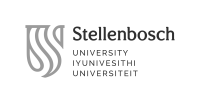F2407 Comparing East and West. Japan’s Peacebuilding: Toward the UN and Asian Policies
Professors
Schedule
Course Description
First, a general understanding of peace policy is reviewed in terms of the UN Document on Peacebuilding. The term “peacebuilding” was first used in Johan Gultung’s discussion of negative versus positive peace. It also identifies several key analytical frameworks for thinking about peacebuilding. However, it was not until the document “An Agenda for Peace” in 1992 that it became known to the international community. At the same time, the United Nations submitted a document entitled An Agenda for Development. This is why development and conflict have been called twins for peace. The peace operations of the United Nations, which has 193 member states, will be understood as the introductory part of this course.
Japan’s ODA was ranked first in the 1990s, but has dropped to fifth since the 9/11 incident. In 2003, the Japanese government reviewed its ODA policy due to financial deterioration and reassessed its contribution to world peace, and began to focus on the peacebuilding field. Japan’s peacebuilding policy is, in a sense, dependent on the United Nations. For example, Article 9 of the Japanese Constitution is an important criterion for deploying the Self-Defense Forces overseas. Therefore, in the first half of this lecture, I will first discuss Japan’s peacebuilding role toward world peace in terms of its relationship with the UN and Asian countries (ASEAN). At the same time, we would like to review the peacebuilding framework of ASEAN as a regional organization.
The second half of the lecture will review the policies of “the Free and Open Indo-Pacific (FOIP) initiative,” which is the peace strategy of the United States, once the leader of the Western bloc and still a major force in global security in the post-Cold War world. The FOIP is based on the “rule of law” and is the cornerstone of the U.S. strategy toward the Asia-Pacific region. In addition, we will consider what is the basis of China’s external strategy against the backdrop of China’s huge economic zone concept, “One Belt, One Road (BRI),” as the U.S.-China confrontation has become more apparent since 2000. Finally, the European Union (EU) is currently made up of 27 countries, and I would like to discuss the role of the non-warring community that the EU has been aiming for by tracing its origins to the EU. We would like to discuss the peace policies of the U.S., China, and the EU in light of their influence on ASEAN and other Southeast Asian regions. The last three or so sessions will be individual presentations by participants who have taken this lecture.
The class will begin with a 40-minute lecture using a PowerPoint presentation prepared by the lecturer, followed by group discussion in the next 20 minutes, with the remaining 30 minutes for each group to raise issues and provide a summary. The second half of the lecture will focus on discussions based on the participants’ own individual presentations on topics related to the lecture.
Course Learning Outcomes
First, we would like to help students understand the peace/peacebuilding policies promoted by the United States, China, the European Union, and other UN member states, based on Japan’s pacifist principles. Specifically, the UN peace operations include preventive diplomacy, peacemaking, peacekeeping, and post-conflict peacebuilding. Next, what is Japan’s peace policy in light of UN peace operations? How are the two countries responding to the UN against the backdrop of the “U.S.-China confrontation?” Moreover, I would like to discuss how the EU, with its 27 member states, is responding. Finally, I would like to once again review what similarities and differences exist between Japan, the U.S., China, and the EU in addition to ASEAN regarding the Peace/ Peacebuilding policies.
Teaching and evaluation methods
Class participation (20%),
group and individual presentations (50%),
final report (30%)
Syllabus: Week-by-week breakdown of classes
In this lecture, references will be listed, but basically the lecture will be conducted with a PowerPoint presentation prepared by the lecturer. In the second half of the class, based on the contents of the first half of the class, each class participant will report and discuss the contents of his/her report.
Orientation week
Week 1: Thinking Flamework of Peacebuilding & Discussion,
Week 2: Japan’s Peace Policy & Discussion,
Week 3: Japan’s Asia Policy & Discussion,
Week 4: UN’s Peace Policy & Discussion,
Week 5: ASEAN’s Peace Policy & Discussion,
Week 6. US’s Peace Policy & Discussion,
Midterm Break,
Week 7: China’s Peace Policy & Discussion,
Week 8: EU’s Peace Policy & Discussion,
Week 9: EU’s Peace Policy & Discussion,
Week 10: Individual Presentation & Discussion,
Week 11: Individual Presentation & Discussion,
Week 12: Individual Presentation & Discussion,
Exam Week
Bibliography
This lecture will be based on the PowerPoint presentation prepared by the lecturer. The following references will be introduced as main references.
1) Hiromi Fujishige, Yuji Uesugi, and Tomoaki Honda, Japan’s PKO at the Crossroads: Japan's Peacekeeping at the Crossroads: Hardline Stance or Continued Hesitation? Palgrave Macmillan, 2020 (e-book).
2) Shujiro Urata, Kaoru Kuroda, and Yoshiko Tonegawa (eds.), Sustainable Development Studies for Humanity, Springer, 2023 (e-book).
3) Mitsuru Yamada and Miki Honda (eds.), Complex Emergencies and Humanitarian Response, Union Press, 2018 (e-book).
4) Ram Peng Ah, Japan's Peacebuilding Diplomacy in Asia: In Search of a More Active Political Role, Routledge, 2018.
Last updated: July 15, 2024


















